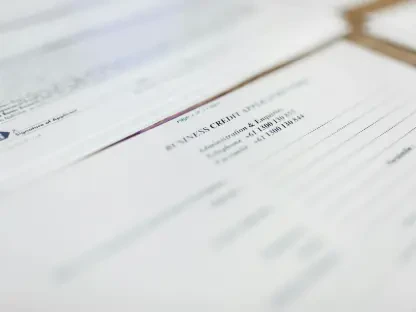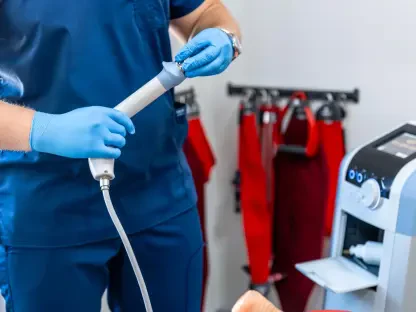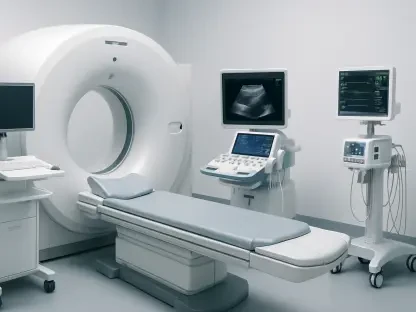Medical debt remains a significant burden for many Americans, with a staggering 12% of adults borrowing $74 billion in 2024 alone to cover healthcare costs, as reported by a Gallup survey. Even more concerning, 58% of the population fears that a sudden health issue could plunge them into financial distress. For those grappling with hefty medical bills, the stress can be overwhelming, but there are actionable strategies to manage this debt effectively. Beyond the immediate financial strain, unpaid medical bills can impact credit scores, making it crucial to understand the unique protections and options available. This article explores practical steps to address medical debt while safeguarding credit, ensuring that individuals are equipped to navigate this challenging landscape with confidence.
1. Examine Bills for Mistakes
Navigating the complexities of medical billing often reveals errors that can inflate costs unnecessarily. Requesting a detailed copy of medical records from the healthcare provider or hospital is a critical first step to compare against the billed charges. Common discrepancies include double-billing, where a patient is charged twice for the same service, especially when multiple providers are involved. Additionally, charges for services not documented in medical records or incorrect dates and lengths of hospital stays can lead to significant overcharges. Disputing these inaccuracies with the provider’s billing office can result in substantial savings. For those with insurance, obtaining an explanation of benefits from the insurer and filing a dispute if coverage was incorrectly denied is equally important. This meticulous review can prevent paying for errors that should never have been billed.
For more complex cases or larger bills, enlisting the help of a medical billing advocate can be a game-changer. These independent professionals specialize in scrutinizing medical bills for mistakes and overcharges, often identifying issues that might be missed by untrained eyes. They are also skilled in negotiating with insurance companies and healthcare providers to reduce costs or correct errors. While there is a cost associated with hiring an advocate, the potential savings and stress relief can make it a worthwhile investment, especially when dealing with intricate insurance disputes or significant debt. Taking this proactive approach ensures that every dollar paid is justified, preserving financial resources for other critical needs.
2. Arrange a Payment Schedule
Setting up a payment plan directly with a hospital or healthcare provider offers a practical way to manage medical debt without immediate financial strain. Many facilities allow patients to pay off bills in installments, often with little to no interest added, making this a preferable option for maintaining cash flow. Initiating a conversation with the provider to establish such an arrangement can prevent the debt from escalating or being sent to collections. This direct approach not only helps in budgeting monthly expenses but also retains the specific credit protections associated with medical debt, which are not available when using alternative financing methods.
It’s advisable to avoid third-party financing options when a direct payment plan is feasible, as these can introduce unnecessary costs and risks. Third-party lenders or medical credit cards often come with fees and high interest rates that can compound the debt over time. By sticking with a provider-negotiated plan, individuals can sidestep these additional burdens and focus on clearing the balance without losing the safeguards that medical debt offers against credit reporting. Open communication with the provider about financial constraints can lead to tailored solutions that fit within a manageable budget, ensuring that the debt is addressed without derailing other financial obligations.
3. Bargain for a Reduced Amount
Negotiating a lower amount on medical bills can significantly ease the financial load, especially when a lump sum payment is feasible. Healthcare providers and hospitals may be willing to offer a discount if a portion of the bill can be paid upfront, recognizing the value of immediate cash flow. This strategy requires a direct conversation with the billing department to discuss potential reductions, leveraging any ability to settle a significant part of the debt quickly. Such negotiations can result in substantial savings, turning an overwhelming bill into a more manageable figure.
Another effective tool in negotiations is researching typical costs for similar procedures in the area using resources like FAIRHealth’s cost estimator. If the billed amount exceeds what others generally pay, this data can be presented to argue for a reduced rate. Additionally, if a dispute with an insurance company is ongoing, requesting extra time to pay from the provider can be beneficial. Filing internal or external appeals with the insurer to reconsider coverage decisions can also impact the final amount owed. This multi-faceted approach to bargaining ensures that every avenue for reducing the debt is explored, potentially alleviating a significant portion of the financial stress associated with medical expenses.
4. Apply for Financial Aid Programs
Exploring financial assistance programs offered by hospitals can provide critical relief for those unable to pay medical bills in full. Under the Affordable Care Act, nonprofit hospitals are required to offer such programs, often referred to as charity care, to eligible patients facing financial hardship. Depending on state regulations, some for-profit hospitals may also provide similar assistance. Requesting the hospital’s Financial Assistance Policy (FAP) document, which must be provided free of charge upon admission, is a vital step in understanding eligibility criteria and application processes. This can open doors to discounts or even full debt forgiveness in certain cases.
Before committing to medical financing options like loans or credit cards, it’s essential to check eligibility for these assistance programs. According to the Consumer Financial Protection Bureau, many individuals who opt for financing are later found to qualify for federal, state, or local aid, which could have prevented the need for additional debt. Taking the time to investigate these opportunities can save significant amounts and avoid the pitfalls of high-interest financing. Hospitals often have staff dedicated to guiding patients through this process, ensuring that those in need receive the support they’re entitled to under applicable laws and policies, thus protecting both their finances and credit standing.
5. Use a Credit Card for Payment
When direct payment plans or financial aid are not viable, using a credit card to cover medical bills can be an option, though it comes with caveats. Medical credit cards, such as CareCredit, are specifically designed for healthcare-related expenses and often feature temporary no-interest periods. However, these cards frequently impose deferred interest, meaning that if the balance isn’t cleared by the end of the promotional period, interest is charged on the entire financed amount, not just the remaining balance. With annual percentage rates often higher than those of standard credit cards, failing to pay off the debt in time can lead to significant additional costs, making this a riskier choice for managing medical debt.
Alternatively, opting for a regular credit card with a lengthy 0% introductory APR period on new purchases can provide a safer route. Some cards offer up to 21 months of interest-free financing, allowing time to pay down the debt without accruing extra charges. This approach requires careful planning to ensure the balance is cleared before the promotional period ends, avoiding the standard interest rates that kick in afterward. It’s crucial to remember that using any credit card converts medical debt into regular consumer debt, stripping away the unique credit reporting protections associated with direct medical bills. Therefore, this method should be considered only after exhausting other avenues that preserve those safeguards.
6. Obtain a Personal Loan
Securing a personal loan to cover medical expenses can offer a structured alternative to credit card debt, often with lower interest rates. Personal loans can be used for virtually any purpose, including medical bills, and provide a fixed repayment schedule that can aid in budgeting. However, potential borrowers should be mindful of origination fees and other charges that some lenders apply, which can increase the overall cost of borrowing. Comparing offers from multiple lenders to find the most favorable terms is essential to minimize the financial impact of such a loan on long-term finances.
Another option within this category includes medical installment loans or financing plans offered through healthcare providers in partnership with lenders. Like medical credit cards, these often come with deferred interest clauses, where failing to pay off the balance within a specified period results in interest charges on the full amount borrowed. Carefully reviewing the loan agreement to understand all terms and conditions can prevent unexpected costs down the line. While personal loans can be a viable solution, they transform medical debt into standard consumer debt, losing the protective credit reporting rules specific to medical bills. This shift underscores the importance of exploring all other options before proceeding with a loan to ensure the best possible financial outcome.
Moving Forward with Confidence
Reflecting on the challenges posed by medical debt, it becomes clear that proactive measures are vital in mitigating both financial and credit-related impacts. Individuals who take steps to scrutinize bills for errors, negotiate payment plans, and seek financial assistance often find themselves in a stronger position to manage their obligations. Those who leverage tools like cost estimators or engage with credit counseling services when necessary also see improved outcomes in handling their debt burdens. Each strategy implemented provides a layer of defense against the long-term consequences of unpaid medical bills.
Looking ahead, staying informed about rights and protections under current laws remains essential for anyone navigating this terrain. Regularly monitoring credit reports for any inaccuracies related to medical debt, especially after repayment, ensures that scores reflect accurate information. For those facing persistent struggles, maintaining open communication with providers and exploring charity care options proves to be a lifeline. By adopting these forward-thinking approaches, the journey through medical debt transforms into a manageable process, paving the way for financial stability and peace of mind in the aftermath of healthcare challenges.









